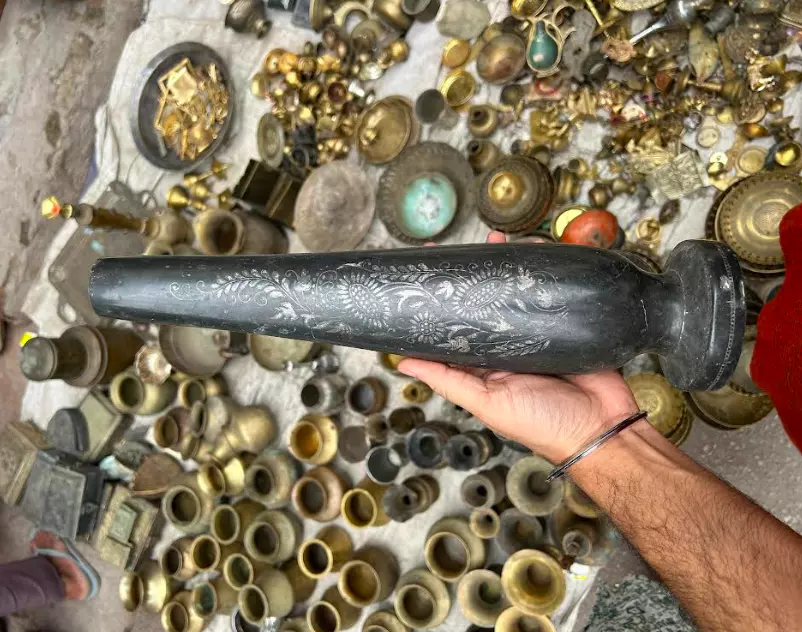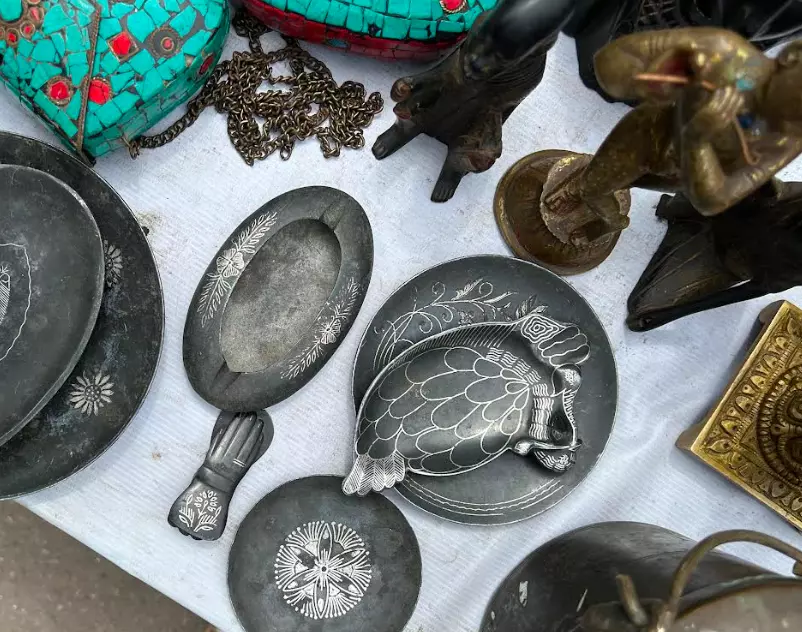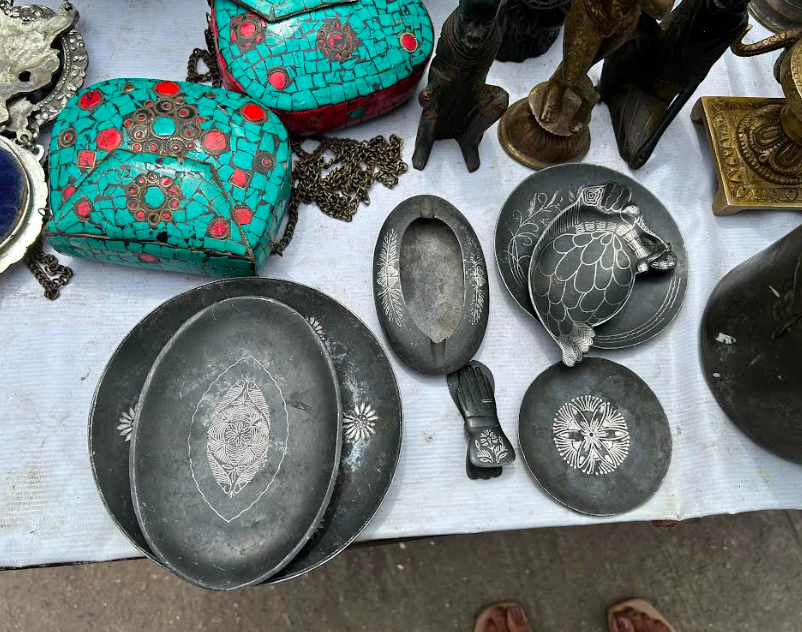Bidriware Now Sold on Charminar Streets
Hyderabad: Once a status symbol among aristocrats, Bidriware has now found its place on a footpath on the Sunday street market of Charminar, an extension of the traditional ‘Jumme Raat Bazaar’ at Dhoolpet, known for selling stolen and scrap goods. Save ‘Jumme ki Raat Bazaar’, the Sunday market at Charminar has now become a hub where one can hunt for once-elite items, given one has an eye for it.
“Vendors of the ‘Jumme ki Raat Bazaar’ are gathering at Charminar every Sunday, setting up stalls in front of closed shops. Here, items, some second-hand, others possibly pilfered, are sold,” said Mohammed Sibahatullah, founder of the Deccan Archives, who also organises heritage walks in the city.
New and fake replicas of artefacts and collectibles are not an uncommon sight at ‘Jumme ki Raat Bazaar’ these days. “Lately, more vendors who had put up stalls in the ‘infamous’ ‘Jumme ki Raat Bazaar’ are now setting up stalls near Charminar because it attracts more tourists and visitors to the city. While in Jumme Raat Bazaar, they are selling fake replicas of brass and metalware among other things,” Aman Hussain Morsi, a concept designer and resident of Falknuma, said.
“The authenticity of Bidriware, often indiscernible to the layman, is evolving to cater to diverse needs. Its transformation and adaptation to current needs not only preserve its artistry but also extend its reach to a broader audience, ensuring its legacy thrives,” says Anuradha Reddy, co-convener of the Indian National Trust for Art and Cultural Heritage (INTACH), Telangana.
Bidricraft, which gets its name from its birthplace, Bidar — the capital of one of the Bahmani dynasties Barid Shahi dynasty. Bidricraft subsequently spread to Hyderabad, which was the capital of the Golconda Kingdom, said Anuradha Reddy.
Charminar was like a four-way to the major trade route; one road led to Machilipatnam, while the other to Surat — that’s how the market started in the area.
“The earliest pieces date from the late 16th or early 17th century and their style incorporates Deccani decorative elements. Mughal influence is also apparent, however, making it difficult to assign a provenance to pieces which are not usually inscribed. The technique reveals intriguing information — the zinc content is so high that it means metallic zinc was used in its manufacture,” reads Metal Plating and Patination Cultural, Technical and Historical Developments.




